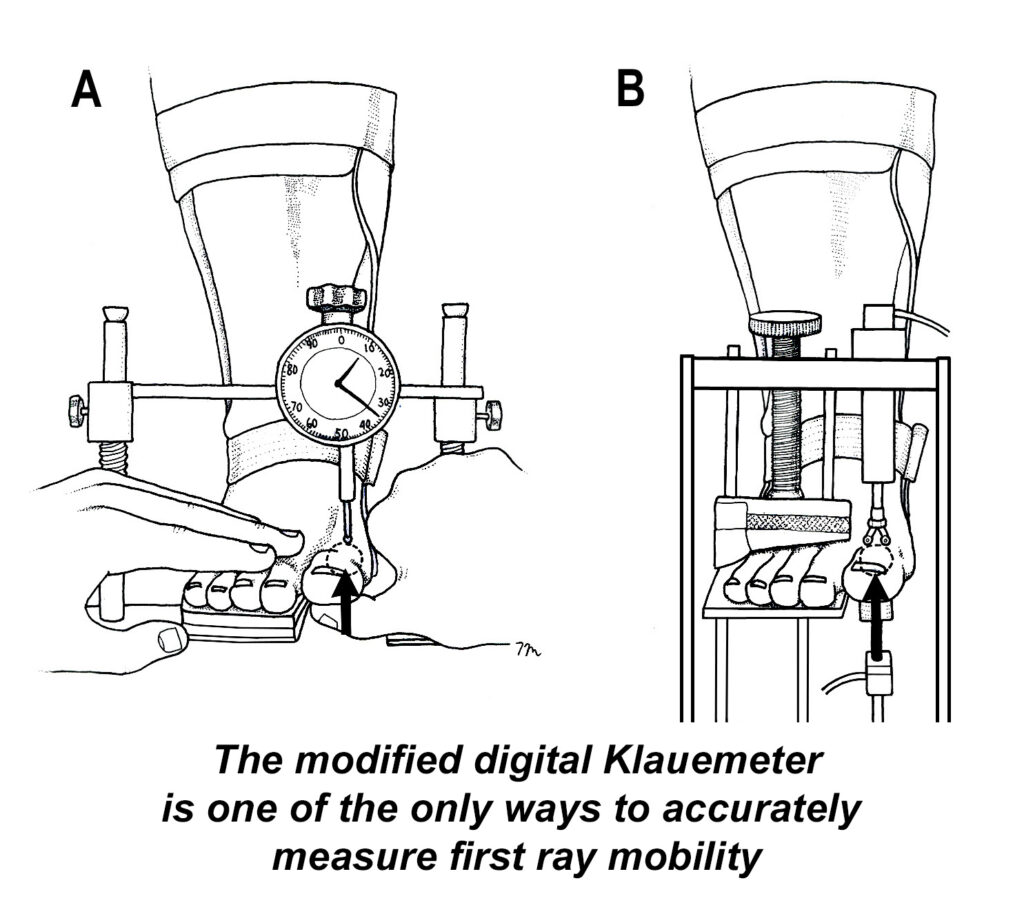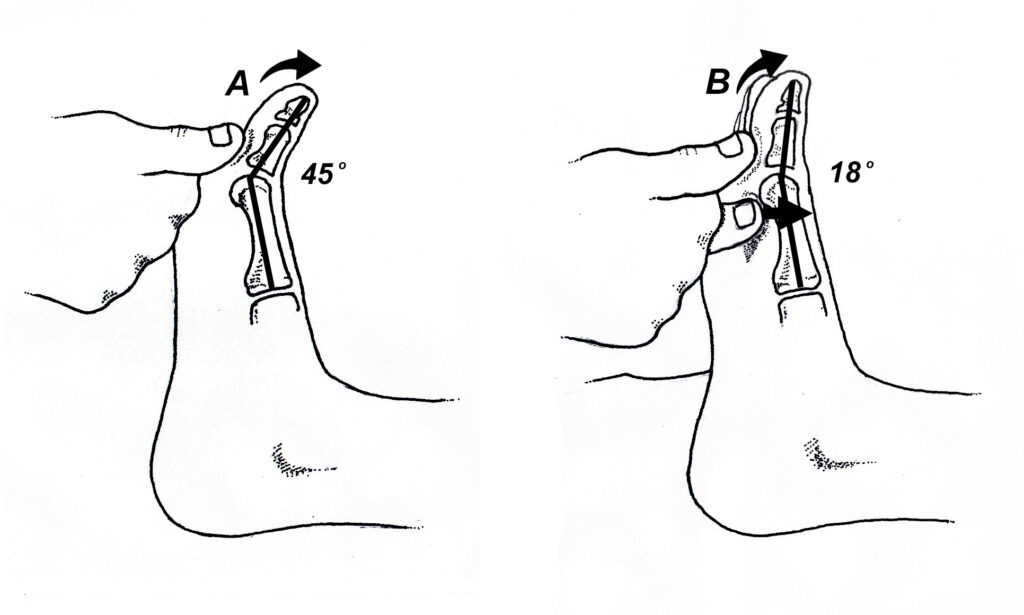Hypermobility of the first ray has been correlated with a wide range of forefoot conditions, including hallux abductovalgus and second metatarsal head capsulitis. Because hypermobility of the first ray undermines the stability of the entire foot, especially during the propulsive period, quantifying the degree of first ray mobility is extremely important. To date, the only accurate way to quantify first ray mobility is with expensive machinery, which is not available to the typical practitioner (Fig. 1).

In this paper, the authors evaluate first ray mobility using a simple procedure called the double dorsiflexion test. The double dorsiflexion test is performed by taking the supine patient measuring dorsiflexion in the first MTP (Fig. 2 A). Next, you apply a superior director force to the first metatarsal head until firm resistance is met and then re-measure first MTP dorsiflexion (Fig. 2 B).

The authors note that a 50% reduction in first MTP motion when the first metatarsal head is moved superiorly is indicative of a hypermobile first ray, as determined by the modified digital Klauemeter. Follow-up evaluation showed that this simple test achieved a specificity of 100% and sensitivity of 90% for identifying first ray hypermobility. I’ve spent the last 20 years trying to come up with a test that quantifies first ray mobility and recently published a paper with Ward Glasoe that reviewed all current methods for quantifying first ray motion (1). This is the first paper I’ve seen where a simple in-office test has this kind of accuracy, essentially negating the need for complex instrument guided measurements and/or x-rays. Once an individual with a hypermobile first ray is identified, strengthening exercises for the intrinsic muscles and peroneus longus can be used to stabilize the first ray, and varus posts and/or orthotics can be considered to help and stabilize the first metatarsal. Identifying first ray hypermobility is especially important before surgery, as surgeons often fuse the first metatarsal and medial cuneiform when first ray hypermobility is thought to be present. The double dorsiflexion test is an effective way to determine if the more complicated surgical fusions are necessary.
- Glasoe WM, Michaud TC. Measurement of dorsal first ray mobility: a topical historical review and commentary. Foot Ankle Int. 2019;40(5):603.
